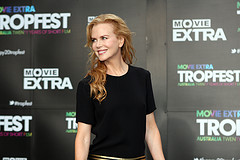Share This Article:
Return to Silver Screen Central Home page


Chris Hemsworth on dry land, not In the Heart of the Sea
C+At the heart of Ron Howard‘s In the Heart of the Sea is an often breathtaking, well-made film about 19th century whaling, nautical disaster, and survival under harrowing conditions. For some reason, however, Howard has seen fit to overload his cinematic vessel with numerous weak subplots and factual inaccuracies and, to top it off, a leaden performance by woefully miscast leading man Chris Hemsworth. As a result, the movie adds far too much baggage and nearly founders.
Heart of the Sea, based on an acclaimed non-fiction best seller by Nathaniel Philbrick, purports to be the story of the whaling ship Essex, which sank in the Galapagos Islands in 1820 after being rammed by a white sperm whale. A handful of survivors, including Captain George Pollard (Benjamin Walker) and First Mate Owen Chase (Hemsworth), were rescued from the ship’s whaling boats after spending over three months adrift. Chase’s account of the voyage inspired Herman Melville‘s Moby Dick.
The actual story of the voyage of the Essex and its aftermath (only a portion of which Heart of the Sea recounts) is so fascinating that Howard had no need to embellish it. Indeed, his depiction of life on the whaler is quite powerful, especially the thrilling CGI effects work. Howard captures the excitement, danger, and cruelty of whaling, as the crew risks their lives in flimsy whaleboats trying to harpoon and slaughter the giant animals for the oil that can be obtained from their blubber. Despite having more than a single movie’s worth of great source material, Charles Leavitt‘s screenplay adds as much fiction to the tale as Melville did, but not nearly as well. Heart of the Sea begins with and periodically returns to the historically inaccurate and completely unnecessary framing device of Herman Melville ( Ben Whishaw) persuading the supposed last survivor of the Essex, cabin boy Thomas Nickerson (played by Tom Holland during the voyage and Brendan Gleeson as an older man), to tell his story. Later, the movie adds, then conveniently drops, a bitter disagreement over seamanship between Chase and Pollard and a cover-up by the ship’s owners of what actually occurred on the voyage. These extraneous subplots merely serve as time-consuming distractions and highlight Chris Hemsworth’s lame attempts at both a New England accent and serious acting. Watch In the Heart of the Sea for its first-rate action sequences; if you want a first-rate dramatic treatment of the same source material, read Moby Dick instead.
Continue reading on In the Heart of the Sea: Mini-review




Recent Comments